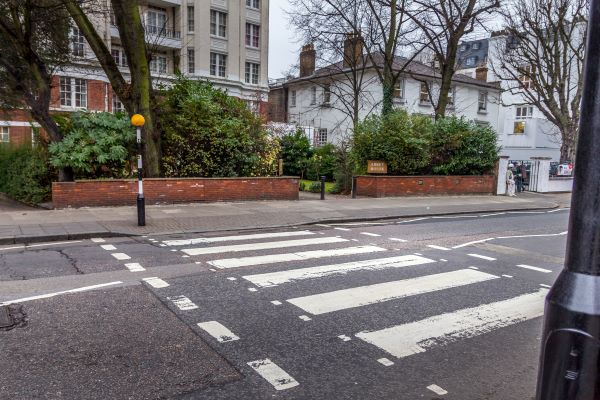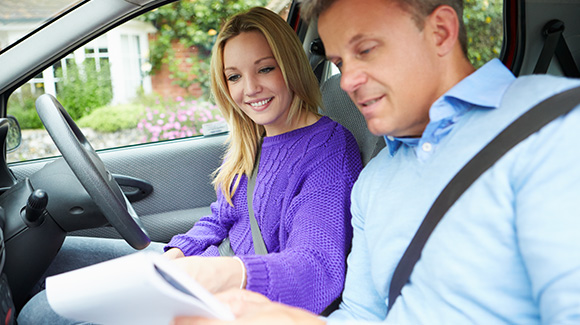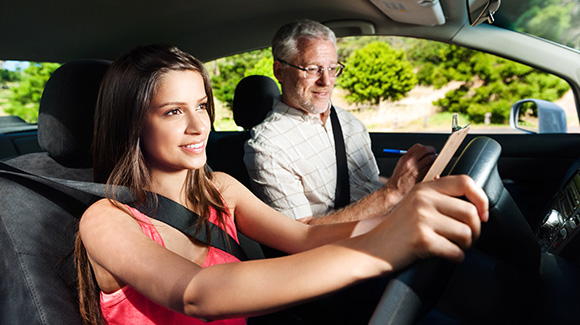Can you take your driving test in your own car
- Ryan Chand
As a learner driver, there may be several reasons why you want to take your driving test in your own car. For instance, you may feel more comfortable with the controls, or you’re driving instructor has other commitments when a test date becomes available.
Whatever the reason, it’s perfectly fine to take your practical driving test in your own car as long as it meets specific rules.
Car requirements for driving test
The car you are taking your practical driving test in, must meet the standards set out by the DVSA for practical tests. It must:
- Be roadworthy and have a current MOT if the vehicle is over 3 years old.
- Have up-to-date vehicle tax.
- Have valid insurance for the car you’re taking your test in.
- Have tyres that meet the legal requirements. You cannot take the driving test if you have a space-saver spare tyre fitted.
- Have 4 wheels and a maximum authorised mass of 3,500kg.
- Have no warning lights illuminated on the car’s dashboard, for example the airbag warning light.
- Be smoke-free, which means that you cannot smoke in your car before or during the test.
- Be able to reach at least 62 mph.
- Have a speedometer that measures speed in mph.
You must have the following fitted to your car:
- Ensure L plates (and/or D plates in Wales) are securely displayed on the front and back of the vehicle.
- Provide an extra interior rear-view mirror for the examiner.
- Have a working passenger seatbelt and a head restraint (not a slip-on type).
You can use a dashcam or camera that is fitted for insurance purposes, providing it does not film or record audio from the inside of the car.
Car features
You can use your car for the driving test if it is equipped with a hill start assist feature or an electronic parking brake.
You can take the test in either a manual car, which has three pedals or an automatic or semi-automatic vehicle, which has two pedals.
Bear in mind that if you take your test in a semi-automatic car, you will only be able to drive semi-automatic and automatic cars once you pass your test.
Benefits of taking your driving test in your own car
Assuming you’ve had plenty of practice in your own car, you’ll be very familiar with the controls, which will give you more confidence during the practical test. It will also give you more flexibility when it comes to booking a test date as you won’t have to schedule your test around your driving instructor.
Cars you cannot use for your driving test
Some cars cannot be used in the practical driving test because they do not give the examiner all-round visibility. These include:
- BMW Mini convertible.
- BMW 218 convertible.
- Ford KA convertible.
- Smart Fortwo (2-door)
- Toyota iQ.
- VW Beetle convertible.
You’ll also need to check with the DVLA if you want to take your driving test in any convertible car or panel van.
Are there any exclusions
If your car has been recalled by the manufacturer because of a safety problem, you won’t be able to take your driving test, unless you can provide proof that it is safe when you take your test.
You must provide proof that states one of the following:
- The car was recalled and the recall work has been completed.
- Work did not need to be carried out following a recall.
- The car you’re taking your practical driving test in wasn’t part of the recall.
Your test will be cancelled and you may lose your driving test fee if you fail to provide sufficient proof.
Can you hire a car for your driving test?
If you’re using a hire car for a driving test, it must be fitted with dual controls and meet all the other requirements.
Keeping your car clean
Before taking a driving test in your own car, it is a good idea to thoroughly clean the inside of your car before your practical driving test. This involves wiping down all internal surfaces, such as the dashboard and car controls, removing clutter and tidying unnecessary items from the inside of the car.
Your car must also be smoke-free; this means you cannot smoke in it just before or during the test.
Getting to and from your driving test
Some provisional car insurance policies are automatically cancelled once you pass your practical driving test. It is important to check your policy documents and arrange a lift home from the test centre if necessary.
Is my car insured for a driving test?
At the start of your driving test, you will have to sign a declaration that states that a valid insurance policy fully covers your car. You’ll need to check that the provisional insurance that you have on your car covers you specifically for your practical test. Otherwise, you will not be able to take your test.
At A Choice, our learner insurance covers you before and during your practical driving test.
If you’re using your driving instructor’s car to take your driving test, they will already have a valid insurance policy in place.
Final thoughts
Whilst it’s perfectly fine to take your driving test in your own car, you’ll have to weigh up the benefits compared with using an instructor’s car.
With your own car, you may be more comfortable with the controls and have more flexibility over test dates. Whereas a driving instructor can help you focus on the areas you want to run through before the test and provide any last-minute advice that might improve your chances of passing.
Whether you decide to use your own car or your instructor’s, we wish you the best of luck. Also see our top driving test tips guide, which provides information about the practical test and how you can pass with flying colours.
Have you just passed your test? Do you need P plates? Check out our post, ‘P plates: What are they and should you use them?’ for more information.
Share this article
Table of Contents
More posts
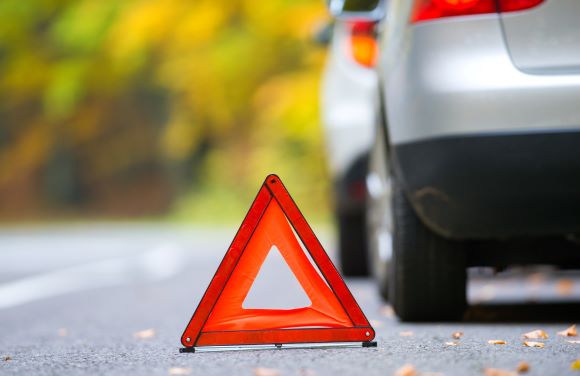
What To Do After A Car Accident | A Choice
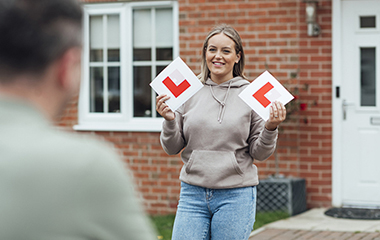
L Plates: What You Need To Know Before You Drive | A Choice
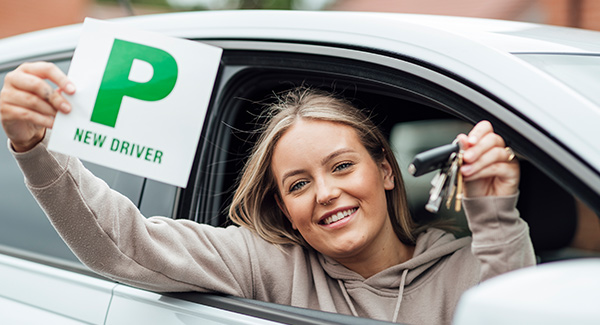
P Plates: What Are They & Should You Use Them? | A Choice
